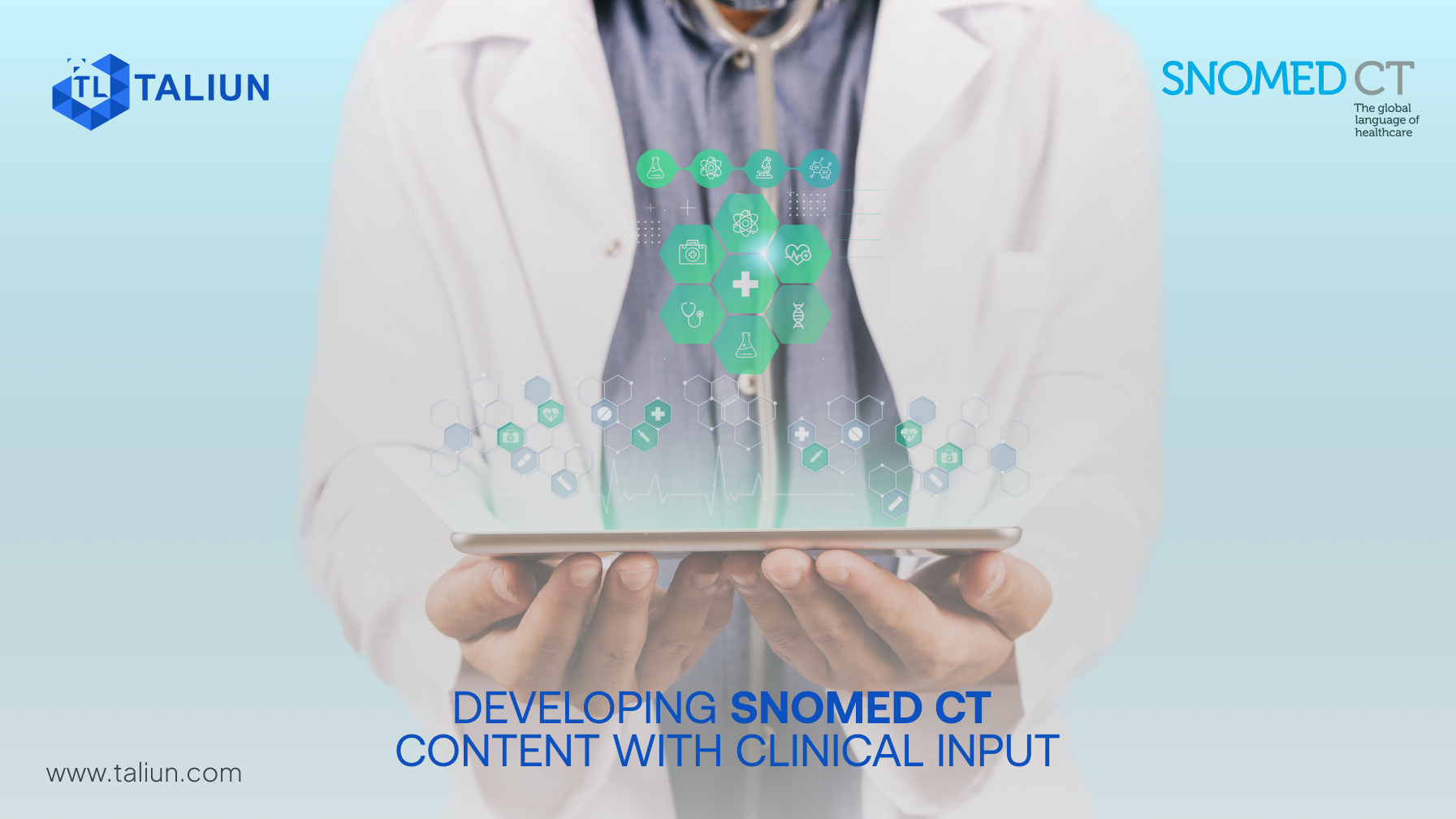Developing SNOMED CT Content with Clinical Input

SNOMED CT is a comprehensive clinical terminology that enables the consistent representation and communication of health information across different settings and systems. It is widely used as a standard for electronic health records, clinical decision support, quality improvement, and research. However, developing and maintaining SNOMED CT content is not a trivial task. It requires a collaborative effort between terminologists, clinicians, and other stakeholders to ensure that the terminology reflects the current and evolving clinical practice and meets the needs of various users.
In this blog, we will discuss some of the benefits and challenges of involving clinicians in the development of SNOMED CT content, and share some best practices and tips for effective clinical input.
Why is clinical input important for SNOMED CT content development?
Clinical input is essential for ensuring that SNOMED CT content is accurate, relevant, and useful for clinical purposes. Clinicians are the primary users and experts of health information, and they have the knowledge and experience to provide meaningful insights into rare disease characteristics, outcomes of interest, interventions, and other aspects of clinical care4. By involving clinicians in the development of SNOMED CT content, terminologists can:
- Validate the clinical validity and applicability of existing concepts and relationships
- Identify gaps and inconsistencies in the terminology coverage and structure
- Suggest new concepts and synonyms that reflect the current terminology usage and preferences
- Provide feedback on the usability and readability of the terminology display and documentation
- Evaluate the impact and implications of terminology changes on clinical workflows and systems
What are some of the challenges of obtaining clinical input for SNOMED CT content development?
Despite the importance of clinical input, obtaining it can be challenging for several reasons. Some of the common barriers and difficulties include:
- Lack of awareness and understanding of SNOMED CT among clinicians
- Lack of time and resources for clinicians to participate in terminology development activities
- Lack of incentives and recognition for clinicians to contribute to terminology development
- Lack of effective communication and collaboration channels between terminologists and clinicians
- Lack of standardized methods and tools for collecting, analyzing, and incorporating clinical input
How can we overcome these challenges and facilitate clinical input for SNOMED CT content development?
To overcome these challenges and facilitate clinical input for SNOMED CT content development, terminologists need to adopt a proactive, systematic, and collaborative approach. Some of the best practices and tips include:
- Educate clinicians about the benefits and importance of SNOMED CT for their practice and patients
- Engage clinicians early and frequently in the terminology development process
- Identify and recruit clinician champions who can advocate for SNOMED CT within their communities and networks
- Provide clear and specific guidelines and expectations for clinician input
- Use multiple methods and channels to solicit clinician input, such as surveys, interviews, focus groups, workshops, webinars, online forums, etc.
- Use user-friendly tools and formats to present SNOMED CT content to clinicians, such as browsers, diagrams, tables, etc.
- Provide timely feedback and acknowledgment to clinicians who provide input
- Monitor and evaluate the quality and impact of clinician input on SNOMED CT content development
Conclusion
SNOMED CT is a valuable resource for improving health information quality, interoperability, and outcomes. However, developing SNOMED CT content requires a collaborative effort between terminologists and clinicians. By involving clinicians in the development of SNOMED CT content, terminologists can ensure that the terminology reflects the current and evolving clinical practice and meets the needs of various users. To facilitate clinical input for SNOMED CT content development, terminologists need to adopt a proactive, systematic, and collaborative approach that educates, engages, supports, and recognizes clinicians who contribute to terminology development.




